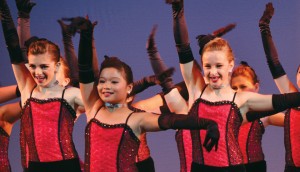Fuse Commentary: Letter from the Hinterland — Cheering on Children and the Arts
What is perhaps most astonishing is that families of every economic stripe, even those for whom it is a great sacrifice, are seeing to it that their children experience these pleasures, despite the sad fact that schools all over the country are cutting back on arts programs.
By Roberta Silman.
June is a momentous month—filled with graduations, commencements, and weddings. It is also, on a more modest level, a month of year-end recitals and performances. In small towns all over this diverse country, children are standing before their peers and parents and grandparents and other assorted relatives singing and playing clarinet, trumpet, and flute solos that span the gamut from “Un Bel Di” to “Oklahoma,” from Gershwin to Grease, from “Sheep May Safely Graze” to John Williams. Or bowing shyly before sitting down to play Burgmuller, a Bach minuet, or The Minute Waltz at the piano.
They range from as little as six to as old as 17 or 18, and the older ones are often amazing as they end years of lessons with gorgeous renderings of pieces by Schubert, Mozart, and Beethoven—having achieved something far grander than anything they imagined when they began those efforts so long ago. For those who go on to careers in the arts, they have been given an invaluable beginning. And for those who do not, they have experienced a unique, intangible form of nourishment, gaining poise and confidence that will help them in whatever work they eventually choose. What is perhaps most astonishing is that families of every economic stripe, even those for whom it is a great sacrifice, are seeing to it that their children experience these pleasures, despite the sad fact that schools all over the country are cutting back on arts programs.
The luckiest are probably those who have access to group classes and join final performances that are wonderfully inclusive, erasing the barriers of age, talent, and even body type. For a few months, they become part of a community whose members work incredibly hard to insure that the final result will become not only an indelible memory but also give great joy to their audience.
Recently my husband and I were witness to such an event when we flew to Eastern Kentucky for a grandchild’s ballet recital. Instead of having each class coming out and doing a short dance, the innovative young director of this ballet school in Paintsville, Kentucky melded song and dance and narration into her own original ballet of Peter Pan.
It was fabulous. Everyone—from the four year olds to the high school kids—worked together to tell Barrie’s story with a joie de vivre that never had a hint of sentimentality. There was extraordinary control among the older dancers, there were some terrific voices, a wonderful, quasi-English nine-year-old voice narrating the story, and when the little ones got distracted, the older ones were there to fill in the gaps. Costumes and sets, made largely by the mothers, had authenticity and sometimes a touch of whimsy—our Tiger Lily wore a pink feather in her red hair, Captain Hook and his pirates had costumes of red and black, signifying blood and death, and the Lost Boys wore sequined baseball caps that gave each number they performed an added piquancy. Sets were changed by those same mothers, dressed in black, as they glided across the darkened stage with professional ease.
We went to two performances in an historic theater plopped in the middle of City Hall with an air conditioning system so ancient as to be non-existent. We were fine for the eleven o’clock performance, but by the time the six o’clock show started, the place was airless. Especially since it was packed. Although we could see the perspiration spotting the costumes to match the perspiration dripping down our own faces, no one complained, and the applause was deafening after especially good numbers and at the end.
As we waited for our nine-year-old outside, watching people greet each other, my husband murmured, “It looks like Our Town come to life.” I nodded as I saw the families greet their “stars” with bouquets of flowers and hugs and kisses. Here was America at its best, I thought, as I scanned the crowd. Among them might be a couple of professionals of the future, their hearts always yearning for better and bigger things. Or others who were just delighted and relieved that they had triumphed over fear and stage-fright and tiredness. Who would know, forever, that just like Rosie the Riveter, they could do it! What a marvelous gift for any child. And what great pride their parents should take in their ability to give such a precious gift.
My husband was right, but as I thought of Wilder’s great American play, I also remembered Thea Kronberg in Willa Cather’s Song of the Lark and those last lines of Keats’s “Ode on a Grecian Urn.” For the first time in a long time, I could feel my heart lift.
This is not only a country where there is Newtown and Aurora and the Boston Marathon bombing and random shootings in our big cities and economic inequality and a host of other dire problems. It is also a place where you can see, in the tiny places that are its very essence, truth and beauty in the flesh.


What a lovely story! Can’t wait until next year’s performance.
Loved this article! I was one standing outside taking in the magic of what just happened inside that old theatre. Just watching those young entertainers and their families line the street with such love and watch the small town come to life…just incredibly awesome! Your words are perfection! Thank you! My granddaughter was Peter Pan.